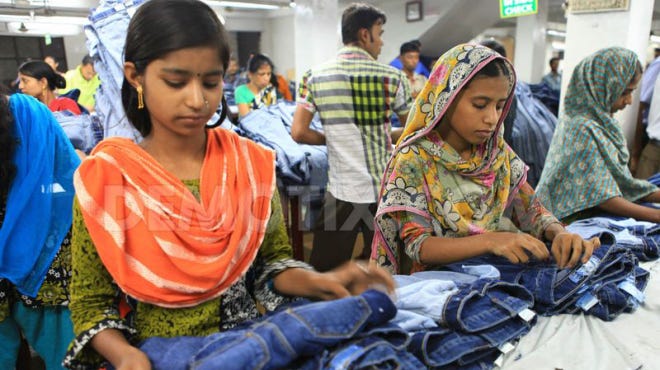Earlier this week, Tik-Tok star Brianna Lapaglia, aka @briannachickenfry, posted a video revealing that something that she hates about New York City is the judgmental climate of fashion. Brianna shared an anecdote of a night out that consisted of a girl ridiculing another girl for wearing leggings on the grounds that they were “basic” and that she personally “has not shopped retail in five years.”

“What do you want me to do, sew all my f–ing clothes? I don’t have time to do that. Everyone thinks that they are so different but you are your own form of basic, you’re all like every other b– in New York city” she told followers.

The video stirred up controversy when users took to the comments to accuse Brianna of shading VictoriaParisF- an up-and-coming Tik-tok sensation known for being thrift savvy. In since-deleted videos, Victoria backed her fans, known as “Victorians”, and said that the video did in fact echo something that she said about retail almost exactly. Claims Brianna adamantly denied.
After a slew of back and forth between the women, they exchanged public apologies. The pair even went out for drinks and poked fun at the situation.

While the pair dismissed the squabble as a mere misunderstanding, it still poses questions about a divide in the fashion industry worth talking about. Half of Gen Z is crusading fast fashion, while stores like Shein and Zara have a stronghold of the shopping habits of the other half. Fast fashion is condemned for the environmental damage that it poses as well as its reliance on underpaid laborers in overseas factories. The upsurge of the trend-crazed fast fashion industry has made clothing more disposable than ever, a commodity not a keepsake. Consumer behavior expert, Micheal Soloman says fast fashion is about more than just clothing.

“It’s not just about clothing, it’s about a disposable society,” Solomon told Vox. According to Solomon, fast fashion’s development falls in line with globalization and the logistical efficiency of the 21st century.
“Companies weren’t able to have such a quick turnaround time, and now with artificial intelligence, they can be even more efficient.”

But does Brianna Chickenfry have a point? Just how attainable is a fast-fashion-free wardrobe? Brianna brought up the undeniable notion that many of us do not have the time or the money to go the extra mile. People also tend to prioritize ease of purchase and price of an item over sustainability, according to a 2018 report that surveyed nearly 700 shoppers ages 18 to 37. The low prices make it all the easier to turn a blind eye.
“The rise of influencer culture and marketing has opened up a niche for fast fashion brands, specifically online retailers, to flourish”, writes Vox Magazine. Social media enables us to document our daily life, we constantly dress to be seen. The visually-driven nature of social media fuels the ever-changing cycle of trends. Keeping up becomes harder and it strengthens the appeal of the cheap prices of fast fashion brands like Shein. According to a 2017 survey commissioned by the London sustainability firm Hubbub, 41 percent of 18- to 25-year-olds feel pressured to wear a different outfit every time they go out.

Luckily, the rise of second-hand fashion is lessening the divide between fast fashion and high-end, luxury brands. In addition, brands like H&M and Zara have issued public pledges to sustainability. Undeniably, the fashion industry is changing. But until this evolution towards sustainable fashion is completed can we cast judgment on the way in which others get by? Does sustainability start with the industry? Or does it start with the consumer? One thing is for sure: we are running out of time to decide.





